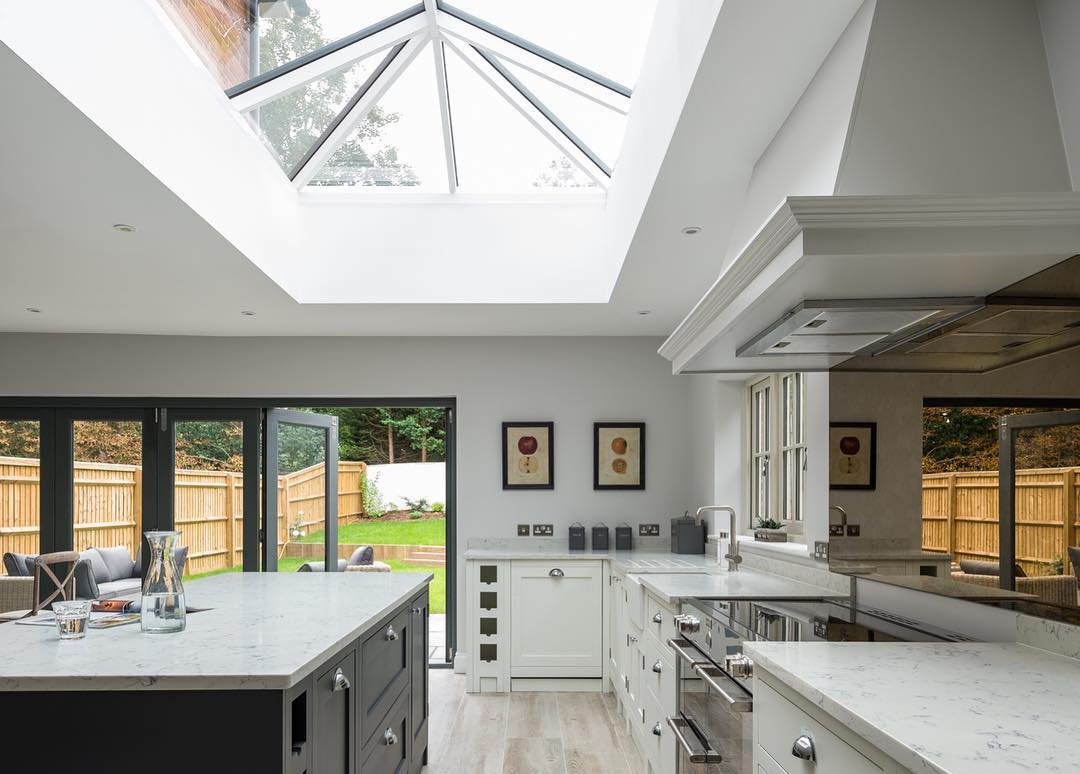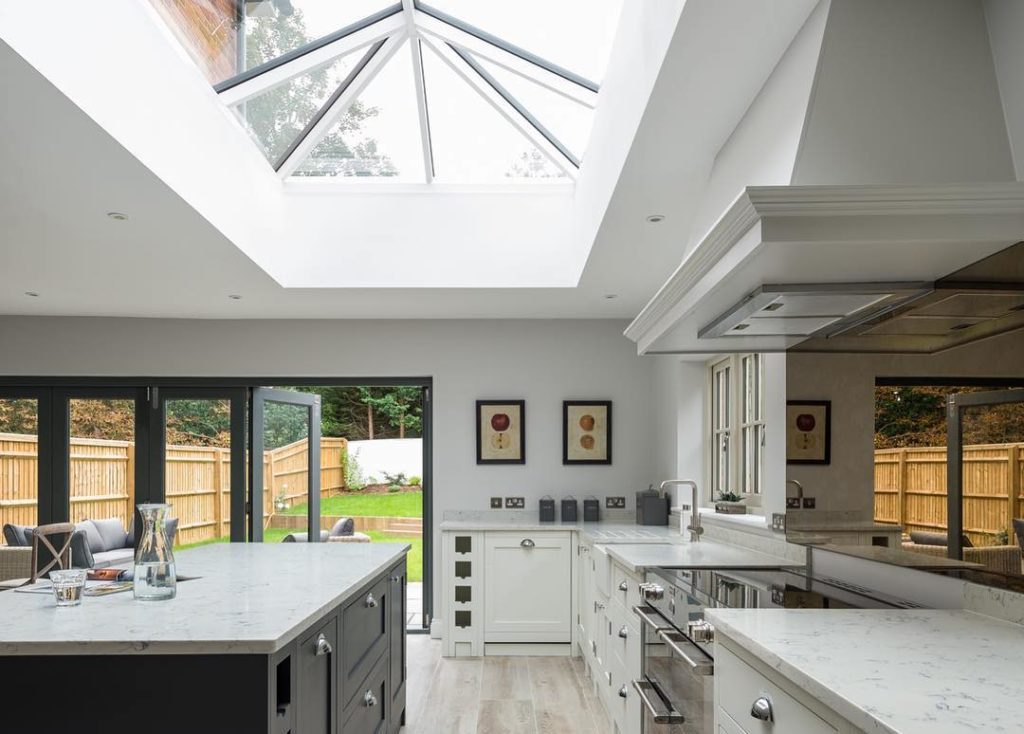
Everything you need to know about roof lanterns
Roof lanterns are an impressive addition to an existing house or great to incorporate into your plans for a new house design. They create extra natural light, as well as being a beautiful statement piece in the room.
What is a roof lantern?
A roof lantern is a glass structure that sits on a flat roof, allowing light to flood he room below. A roof lantern is an elongated pyramid, usually rectangular based with four panes of glass, two trapezoids and two triangles making up the traditional lantern shape.
Skylights vs roof lanterns –
Many people get roof lanterns confused with sky lights, the main difference it the shape. As we explained a roof lantern is a pyramid shape whereas, a skylight is simply a window set in the roof.
People that have lower ceilings often opt for a roof lantern because they will increase the head height in the room. This makes the room feel bigger and more open.
Skylights are seen as a more modern feature on a house. Whereas, roof lanterns were first used by the Victorians, but they are becoming more popular in modern designs.
How much does a roof lantern cost?
The cost of roof lanterns depends on the size, materials, glazing, and any extras you may want to add. The average cost of installing a roof lantern in the UK is around £2500. However, for more accurate prices we recommend speaking to a roof lantern specialist to get a quote.
Where should you position your roof lantern?
The popular spot to install an overhead roof lantern is the kitchen, where the day light is the best. They are usually places above the dining table or the island in large kitchens. Although, some people like to place them in their living rooms to create extra natural light in the space.
Will you need planning permission?
Planning permission is not usually required for a roof lantern as long as these permitted development rules are followed:
- Roof lanterns must be no higher than the highest part of the roof.
- No roof openings, unless the height is at least 1.7m above the floor.
- Roof lanterns positioned in a side elevation roof slope must utilise obscure glazing.
- Roof lanterns must one extend 150mm above the sloping plane of the existing roof.






